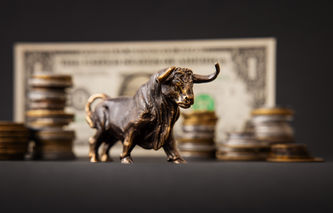Definition
The term bear put spread refers to a vertical spread consisting of two puts with the same expiration date but different strike prices. Bear put spreads require a near term cash outflow but have the potential to produce a longer-term cash inflow.
Explanation
A bear put spread is a strategy that includes the purchase of one put and the sale of a second put with a higher strike price (long put), which is used to help offset the cost of purchasing the lower priced strike put (short put). The strategy is used when an investor would like to profit from a stock that declines in value.
As the stock's price approaches the lower put's strike price, a bear put acts very much like a long put. But the proceeds in this strategy are capped as the short put establishes a ceiling on the investor's profit. This is the trade off with this strategy, since the premium paid on the short put lowers the overall cost of this approach.
As a reminder, a long put involves the purchase of a put option, speculating the price of the underlying security will decline. A short put involves the selling of a put option, which obligates the seller to purchase the shares of the underlying stock if the holder of the put exercises their option, or if the option expires in-the-money.
Maximum profits are realized if the price of the underlying security falls below the lower strike price on the spread. When this occurs, the investor would be assigned on their short put, which obligates them to buy the securities at a strike price that is lower than their long put position. In turn, the investor would exercise their long put position, and sell the same stock at a higher price. The profit under these conditions is the difference between the two strike prices, less the net outlay on the spread.The maximum loss occurs when the stock price rises above both the short and long put's strike price at expiration. If this happens, both options expire out-of-the-money and the investor's loss is limited to the net outlay on the spread.
The breakeven point for a bear put spread occurs when the stock's price is below the higher priced put (long put) by the same amount as the net outlay to establish the position. When this occurs, the short put expires out-of-the money and the value of the long put would equal the net outlay.


.png)

